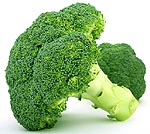Difference Between Simple and
Complex Carbs

A carb is a carb, right?
Wrong.
There are two main types of carbohydrates, and while the main function for both is to provide the body with energy, the rate at which they release energy into the body give them very different nutritional profiles.
First up, you get the most common carbohydrate — simple carbs. These provide the body with quick energy. They spike insulin levels to give the body a boost and are best consumed in the early morning, or when the body needs a pick-me-up of energy.
They release energy rapidly into the blood stream, however, this energy needs to be utilized immediately by the body, otherwise it is stored as fat.
Simple carbs include most of your high sugar fruits, for example, watermelon, strawberries, kiwi fruit, oranges, pears and plums, to name a few. While these are considered healthy options, an overconsumption of sugary fruit will most likely lead to an increase in weight. After all, these fruits are packed with sugar.
Then, there are simple carbohydrates that are packed with too much sugar. These foods should be kept to an absolute minimum and avoided as much as possible, especially if weight loss is your goal. These include table sugar, gums, honey, chutney, chocolate and candy, cakes, jam, toffee, pickles and most puddings, to name a few.
It is also important to note that these high-sugar simple carbs can be derived from drinks as well, specifically fizzy, soft drinks and energy drinks.
The second group of carbohydrates are the complex carbs. These are different to simple carbs, but not that complex at all. They are called complex carbs because they provide your body with a steady supply of energy, that is, energy sustained for longer periods.
This type of carbs include rice, pasta, potatoes, barley and wheat. The idea when consuming these complex carbs for weight loss is to avoid consuming them late at night when the energy they provide cannot be burnt off.
So the next time you pick up a banana and a slice of bread, know how they can provide you with different types of energy.
Author: Dimi Ingle.
Copyright 2009: Remedium. This article may not be copied, in whole or in part, without the written consent of Remedium.
|